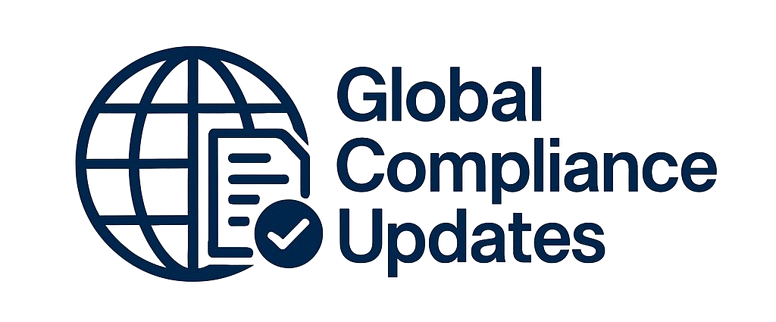The regulators want financial institutions to comply with their appraisal guidance. But more importantly, the regulators intend for banks to recognize and avoid situations that create risk for their specific institution. Operational risk incorporates many of the other types of risk an institution can face. There are some conditions under which a faulty appraisal program can inflate a bank's operational risk. This webinar will look closely at those situations and options to avoid them.
WHY SHOULD YOU ATTEND?
- Banks are astute in assessing credit risk, but often underestimate the risk to the institution from lack of full compliance with the Interagency Appraisal and Evaluation Guidelines
- Most banks are not aware that inefficient and improper linkages of the appraisal function with other departments within the institution can create an added risk to the institution
- The big focus in banks is on credit risk, followed by market risk, but internal practices can also enhance risk to a bank's operation
- Many banks' compliance monitoring and risk assessment processes overlook the appraisal function
- This webinar provides context for a better understanding of operational risk and how the appraisal function may enhance or impair the soundness of an institution
AREA COVERED
1. You will be given a framework for and ideas to allow your bank to customize its ORM program.
2. You will learn:
- The impact of the appraisal function on the institution and its operational risk
- How, with an effective ORM program, the appraisal function facilitates loan production and also reduces risk
- How people play a part in successful operational risk management
- How technology can have an impact on operational risk management
- Some warning signs of poor appraisal function integration in operational risk management
LEARNING OBJECTIVES
You will learn:
- How the interagency appraisal and evaluation guidelines stress risk assessment in the appraisal program?
- The definition of operational risk and how this flows through the entire organization, including the appraisal function
- That operational risk can be managed, but not eliminated
- About ORM, discipline, and practice for managing operational risk
- The problems with retaining a more traditional system of risk discipline silos
- The importance of transparency in the ORM process
WHO WILL BENEFIT?
- CEOs and presidents of community banks
- Credit administration officers
- Chief appraisers/appraisal function managers
- Credit officers involved in the appraisal function
- Credit reviewers and other credit side personnel
- Lending group managers
- Employees tasked with elements of the appraisal function
- Banks are astute in assessing credit risk, but often underestimate the risk to the institution from lack of full compliance with the Interagency Appraisal and Evaluation Guidelines
- Most banks are not aware that inefficient and improper linkages of the appraisal function with other departments within the institution can create an added risk to the institution
- The big focus in banks is on credit risk, followed by market risk, but internal practices can also enhance risk to a bank's operation
- Many banks' compliance monitoring and risk assessment processes overlook the appraisal function
- This webinar provides context for a better understanding of operational risk and how the appraisal function may enhance or impair the soundness of an institution
1. You will be given a framework for and ideas to allow your bank to customize its ORM program.
2. You will learn:
- The impact of the appraisal function on the institution and its operational risk
- How, with an effective ORM program, the appraisal function facilitates loan production and also reduces risk
- How people play a part in successful operational risk management
- How technology can have an impact on operational risk management
- Some warning signs of poor appraisal function integration in operational risk management
You will learn:
- How the interagency appraisal and evaluation guidelines stress risk assessment in the appraisal program?
- The definition of operational risk and how this flows through the entire organization, including the appraisal function
- That operational risk can be managed, but not eliminated
- About ORM, discipline, and practice for managing operational risk
- The problems with retaining a more traditional system of risk discipline silos
- The importance of transparency in the ORM process
- CEOs and presidents of community banks
- Credit administration officers
- Chief appraisers/appraisal function managers
- Credit officers involved in the appraisal function
- Credit reviewers and other credit side personnel
- Lending group managers
- Employees tasked with elements of the appraisal function
Speaker Profile
 Heidi C. Lee
Heidi C. Lee
Heidi Lee is a commercial review appraiser with 18 years of experience at Whitney National Bank, a mid-sized financial institution. Since retiring from Whitney Bank in 2011, Heidi has founded Appraisal Review and Consultation to share her skills and appraisal regulatory knowledge base with other financial institutions. Her firm offers commercial review services and appraisal policy/procedures assistance to small- and medium-sized banks across the country.She has earned the MAI and the AI-GRS designations issued by the Appraisal Institute and the MRICS designation issued by the Royal Institution of Chartered Surveyors. She holds a general appraiser certification in Louisiana and Texas …
Upcoming Webinars

ChatGPT and Project Management: Leveraging AI for Project M…

Workplace Investigations 101: How to Conduct your Investiga…

Project Management for administrative professionals

The Monte Carlo Simulations in Excel for Risky Investments

Onboarding is NOT Orientation - How to Improve the New Empl…

Dealing With Difficult People: At Work & In Life

Transform Data into Insights: A Beginners Guide to Excel Pi…

Construction Lending And Real Credit Administration: Evalua…

Understanding Accounting for non - Accounting professionals

Harassment, Bullying, Gossip, Confrontational and Disruptiv…

New Form 1099 Reporting Requirements: 2025 Compliance Update

Human Error Reduction Techniques for Floor Supervisors

HR Metrics and Analytics 2025 - Update on Strategic Plannin…

Treating Employees Like Adults: Discipline versus Empowerme…

7 Ways To Beat Burnout: Without Quitting Your Job


How to Write Procedures to Avoid Human Errors

Handbook Overhaul 2026: Compliance, OBBB Act & Beyond

FDA Proposes Framework to Advance Credibility of AI Models

Ethical Terminations: Navigating Employee Exits with Legal …

Understanding EBITDA – Definition, Formula & Calculation

Project Management for Non-Project Managers - Scheduling yo…

4-Hour Virtual Seminar on Hidden Secrets of Selling & Marke…

Validation Statistics for Non-Statisticians

Data Integrity and Privacy: Compliance with 21 CFR Part 11,…


The Alphabet Soup: When the FMLA, ADA, COBRA, and Workers' …

Talent Management: How to Leverage AI and ChatGPT Tools for…


Offboarding with Care: Conducting Legal & Ethical Employee …

2-Hour Virtual Seminar on How to Conduct an Internal Harass…

Payments Fraud Detect & Prevent Check, ACH and P-Card Schem…

Managing Toxic & Other Employees Who have Attitude Issues



Reduce Stress in the Workplace: Effective Ways to Handle Co…





Excel - Pivot Tables - The Key To Modern Data Analysis and …
